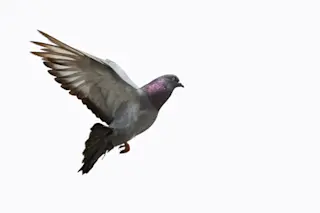How do you help a bird with a fractured wing? For avian veterinarians at Shiraz University in Iran, the answer may lie in repurposing the bones of deceased dogs and sheep to use as implants.
This wouldn't be your go-to solution if you found an injured bird on the sidewalk, but rather a technique for veterinarians to implement into their practice when treating injured fowl. As stated by a team of Shiraz University veterinarians in a study published yesterday in the journal Heliyon, little research has been done on surgical techniques that may help birds repair fractures.
By using repurposed bone, the veterinarians were able to create lightweight pins to help during rehabilitation and get injured pigeons back on their wings again. And the Shiraz veterinarians report that they are already using this method in their avian clinic to treat injured visitors.
Normally, avian surgeons use metal pins to stabilize ...














